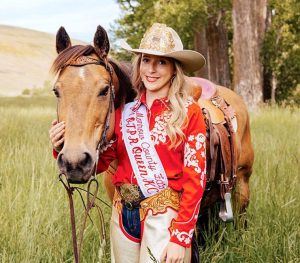Woolen mill woven into fabric of region’s history
Published 10:17 am Tuesday, December 9, 2003
This article appeared in Pioneer Trails, Vol. 1, No. 2, August 1976, and is available at Heritage Station museum.
In 1863, a young Yorkshireman, Thomas Kay, arrived in Oregon to become the weave room superintendent of the West Coast’s second woolen mills at Brownsville. Ably providing his abilities, he became superintendent and a partner in the mill.
Trending
In 1889, he left the Brownsville mill and opened his own mill in Salem. His daughter, Fannie, who assisted her father in the mill, married a young retail merchant, C. P. Bishop. Their three sons grew up in the mill learning from their grandfather the principles of the business, an appreciation for the potentials of the Northwest and a belief in honest quality of product.
A wool scouring mill was established in 1893 in Pendleton by local representatives with Eastern financial backing. Scouring was a seasonal occupation, so to provide full-time employment and utilize the wool of the area, the operation expanded in 1895 to include a blanket weaving mill. The brightly colored Indian blankets they produced quickly became popular with the Indians and whites for the color, patterns and quality.
In 1905, the interest of the Eastern backers diminished and the mill declined. To keep the mill in Pendleton, it was offered to Mr. and Mrs. C. P. Bishop. They and the people of Pendleton helped finance the purchase of the mill by two of their sons, C. M. and R. T. Bishop. They built a new concrete building and resumed production of the Indian blankets.
In 1912, a fabric mill in Washougal, Wash., was purchased, adding a new dimension to the operation. R. T. Bishop left the firm and the third brother, R. C. Bishop, joined it in 1919. R. T. Bishop was the first Indian director of the Pendleton Round-Up and was succeeded by R. C. Bishop who continued in that capacity until his death in 1927.
In 1924, Pendleton men’s woolen shirts were introduced. These colorfully patterned garments were an innovation in woolen shirts which were generally available only in solid colors. Gradually they became popular with Northwest men and achieved recognition across the country for their original patterns, color and quality.
From this base Pendleton has expanded its men’s wear line, introduced a complete selection of women’s sportswear and over the counter piece goods. Pendleton Woolen Mills is a “vertical” operation beginning with the raw wool and performing every step of the processing in its own facilities. The high standards established by Thomas Kay have been faithfully maintained by his descendants, now in the fifth generation.
Trending
—
Editors note: On March 1, 1989, Mike Forrester, former editor of the East Oregonian, reported on the status of the Pendleton Woolen Mills at that time: “From the time the Bishops and the community built the first plant in Pendleton in 1909, the company has grown considerably. In addition to the plant in Pendleton, the firm has 13 other facilities. In Portland there are three garment facilities, a fabric weaving mill, a shipping facility and a headquarters building. In Washougal, Wash., is a fabric weaving mill. Omaha and Nebraska City have women’s wear garment plants. Eastern Pennsylvania has a knitting mill association, and DisneyLand in Southern California, has a permanent Pendleton Woolen Mills exhibit. Blankets and fabric produced in Pendleton used to be finished in Pendleton but are now trucked to Washougal for the final work.”









